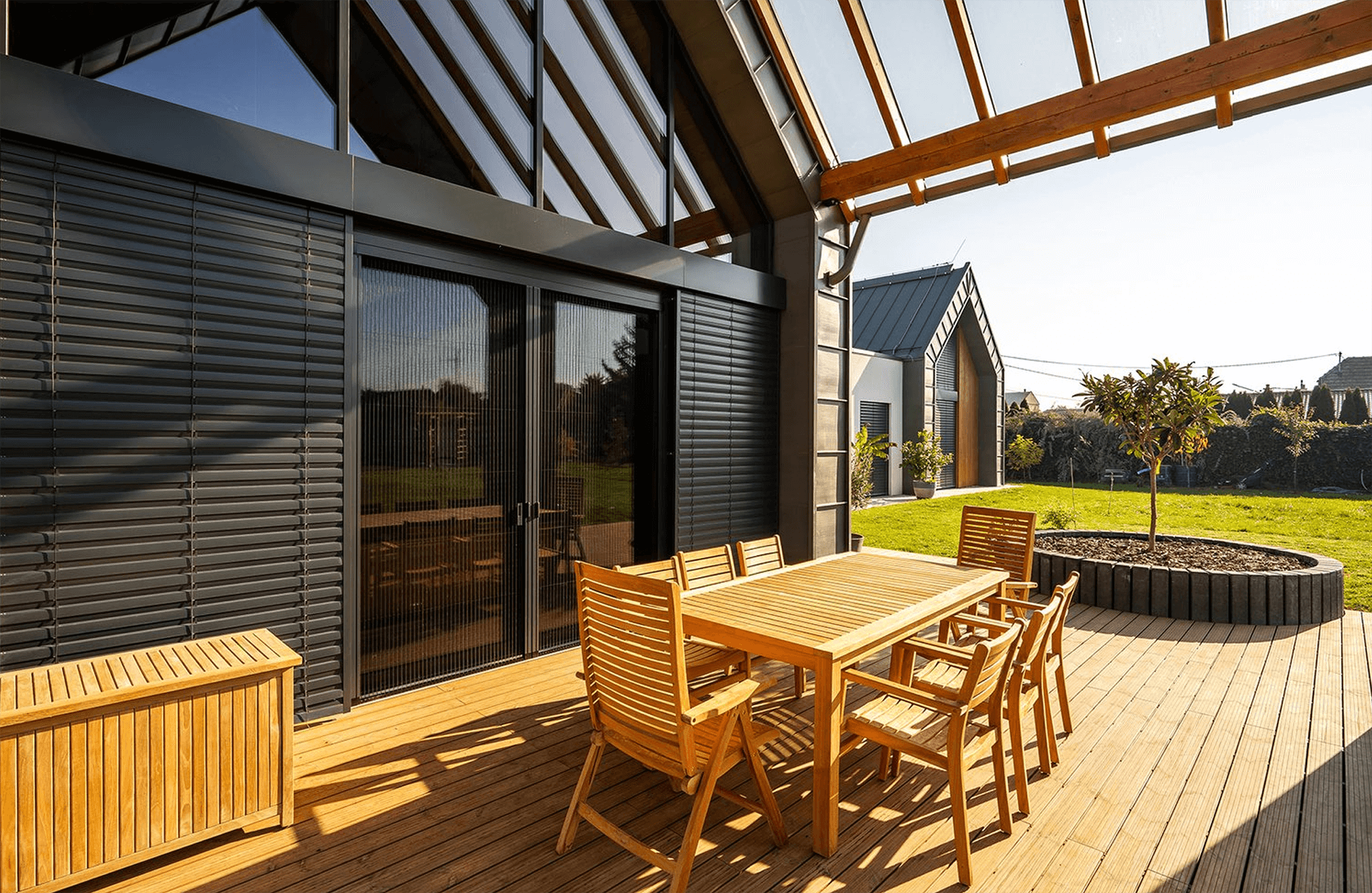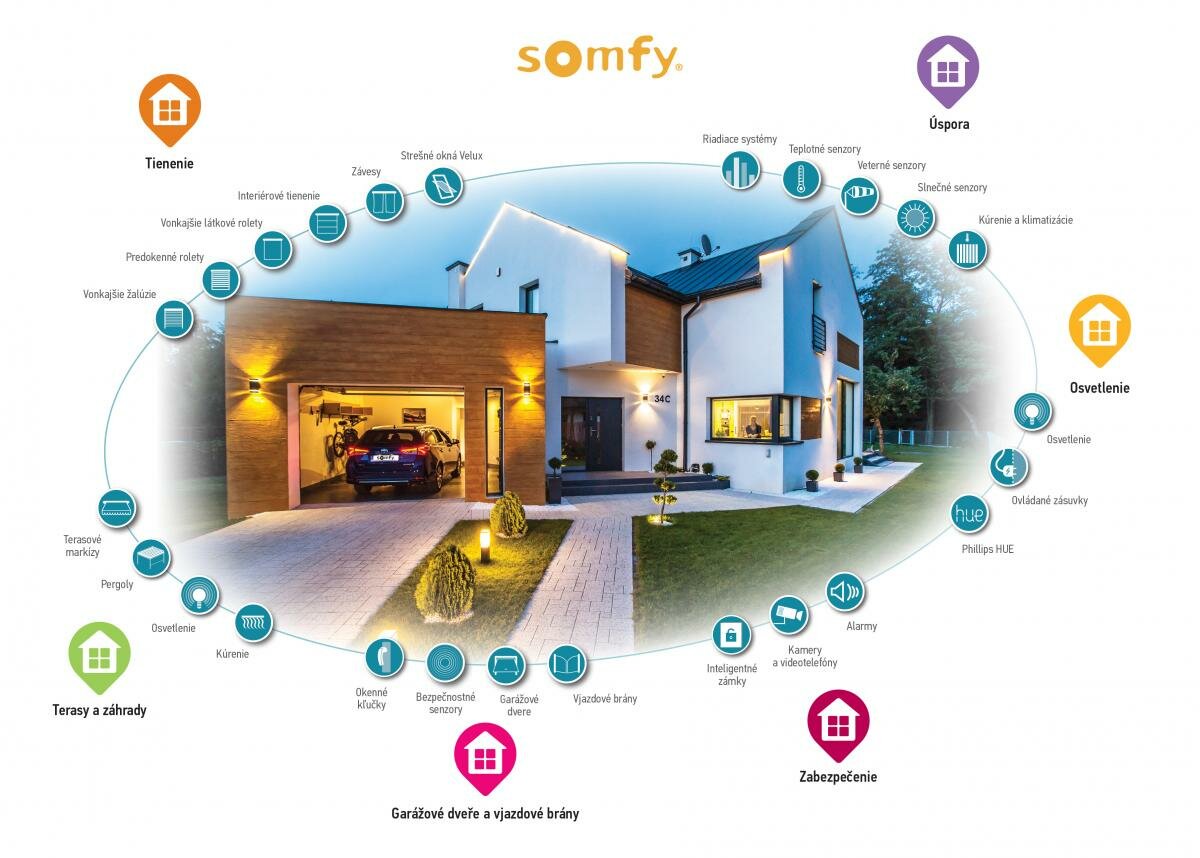Smart Home

Sometimes the simplest way is just to press a button on a remote or wall controller and have everything under control. If you enjoy experimenting with new technologies or want to feel more comfortable, you can try some automation that saves time and energy. Sometimes, it only takes setting up a few scenes to make everyday life easier.
Benefits of Smart Home
- Comfort – control everything remotely
- Security – better control over your home
- Energy savings – optimizing electricity and heating usage
- Automation – setting routines and scenes (e.g., in the morning, the lights turn on, music starts, and the coffee machine runs)
Smart Home is a system that allows automated control and management of various devices in the home via the internet, mobile apps, or voice assistants (e.g., Google Assistant, Amazon Alexa, Apple Siri).
Main Features of Smart home
- Shading – automatic blinds and shutters, with the option to connect to a weather station
- Lighting – light automation (dimming, turning on/off remotely, colored lighting)
- Heating and Cooling – smart thermostats for energy savings
- Security – smart cameras, door locks, alarms, motion sensors
- Multimedia – control of TVs, audio systems
- Appliances – smart refrigerators, washing machines, coffee machines with remote control
- Irrigation – intelligent irrigation control
.jpg)
How does the integration of a weather station with shading technology work?
A weather station can have very practical use when connected with shading technology (such as blinds, shutters, awnings, pergolas, etc.). The integration of a weather station with an automatic shading system can significantly improve comfort, efficiency, and energy savings in your home or commercial properties.
The weather station monitors various meteorological factors that can affect the need for shading or protection from the sun, wind, or rain. This data can be linked to the automatic control of shading technology, allowing for dynamic and automated adjustment of the environment.
.jpg)
Benefits of integrating a weather station with shading technology
- Comfort: Shading technology adapts to the current weather without the user needing to intervene. Your windows are automatically shaded when the weather demands it.
- Device Protection: Protection from sunlight, strong winds, or rain extends the lifespan of shading technology and devices in the home.
- Energy Savings: Automatic settings, such as closing blinds during strong sunlight, can reduce air conditioning or heating costs.
- Improved Comfort: Shading technology connected to a weather station ensures optimal indoor conditions, whether it’s protection from the sun, maintaining heat in winter, or cooling in summer.
Examples of using a weather station in connection with shading technology
Sun, UV radiation, and sunlight sensor
- Automatic opening and closing of blinds or shutters: If the weather station detects strong sunlight or a high UV index, it can automatically shade the windows to protect the interior from overheating or furniture damage.
- Morning and evening: When the sun is very strong (especially in summer), the weather station can alert the system to automatically lower the blinds or awnings and maintain a comfortable temperature in the room.
Wind and wind sensor
- Protection against strong wind: The weather station can monitor wind speed, and if it is too strong, it can automatically retract the awning or blind to prevent damage. In case of strong winds, awnings could automatically be rolled up to protect them from damage.
- Example: If the wind reaches a certain speed, the weather station will send a signal to automatically retract the awnings or blinds, preventing damage and simultaneously protecting the interior from adverse weather conditions.
Precipitation and rain sensor
- Protection against rain: If the weather station detects rain, it can automatically retract the awnings or blinds to prevent water from entering the interior. This is very useful for awnings above terraces or balconies that could be damaged by rain.
- Automatic increase in protection: If rain is expected to continue, the system can preemptively adjust the settings of the shading technology.
Temperature and temperature sensor
- Optimization of indoor conditions: The weather station can monitor the outdoor temperature and, based on this data, adjust the blinds to maintain an optimal temperature inside. For example, if the outdoor temperature rises, the system can automatically close the blinds, reducing the need for air conditioning.
- Energy savings: In the winter, if the temperature is low, the weather station can detect sunlight and, in turn, open the blinds to allow the sun to naturally warm the room, reducing the need for heating.
Automated scenarios and weather-adapted scenarios
- Setting various scenarios: All this data from the weather station can be linked with scenes in the smart home system. For example, you can set a "summer day" scenario, where the blinds automatically close when the temperature rises above a certain level, and the awning is retracted when the sun starts shining.
- Complex scenarios: You can create different scenarios based on the weather. The "storm" scenario can close the awnings and lower the blinds to protect against wind and rain.






